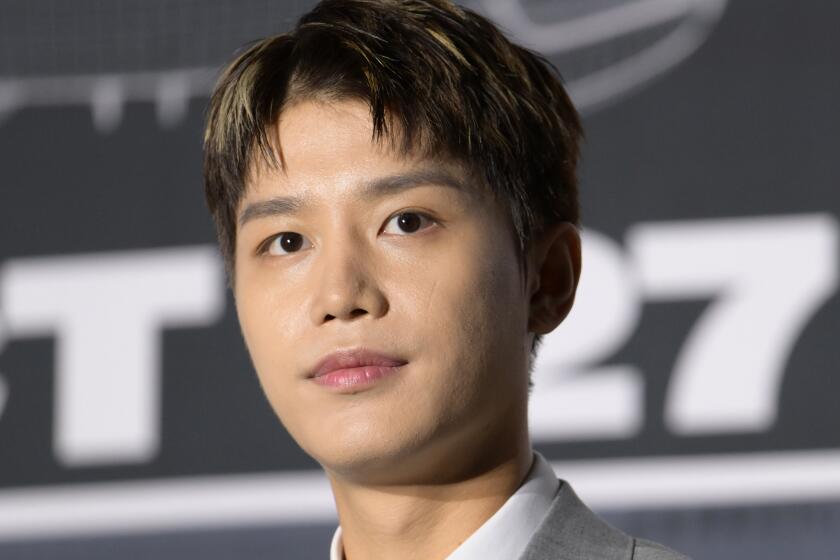One Woman Owns ‘One Race Woman’
- Share via
In assembling an intuitive, feminist, three-hour dance-theater epic a la Pina Bausch, locally based choreographer Winifred R. Harris relies so extensively on spoken texts that ultimately the result needs the services of a visionary director--Julie Taymor, perhaps--more than a maker of dances. Harris creates gutsy, imaginative movement for her Between Lines ensemble, but in this talky project it isn’t enough: Her dances may soar but her staging plods, and that turns out to be a fatal flaw.
After a long gestation, and periodic previews as a work-in-progress, Harris’ “One Race Woman” received its premiere Saturday at the John Anson Ford Amphitheatre in Hollywood. Beginning with an invitation to “relax and breathe and feel,” along with a powerful “Birth” solo by Harris herself, it surveyed a wide range of women’s experiences, focusing on childhood conditioning, pervasive notions of beauty and violence against women.
More and more, however, dance expression merely punctuated or visually amplified passages written by Khalil Gibran, Wanda Lee Evans, Luisah Teish, Brian Andreas, Ntozake Shange and 14 others--passages that completely defined the subjects and sensibilities of “One Race Woman” with no real need for dancing and, moreover, fueled the evening’s one indispensable performance. Billed as a guest artist, actress Karen Malina White assumed a variety of roles, speaking in an inexhaustible range of voices and out of them emerging as Everywoman: at once passionate, profound and brilliantly authoritative. Whether detailing sexual abuses in tones of outrage or offering a deft character portrait of a woman remembering her 100th birthday, White simply owned the evening, making the left side of the stage where she usually appeared more compelling than anything happening in the center.
Obviously an audience confused or intimidated by pure dance will find any choreography more accessible if it spells out its meanings in words. Indeed, lots of modern dance artists have strayed into grandiose text-dominated projects weak in dance expression, and at UCLA it has become a cottage industry to precede dance performances with lectures and follow them with question-and-answer debriefings. In the process, the dance itself becomes a kind of pretext for extensive interpretations and explanations that it may never be able to support.
Harris is no academic huckster out to tell us what to look for or what we’ve missed--even at their most word-saturated, her dances deliver the intensity of their accompanying texts. But nearly all her company dancers are trained for action, not acting, and their own spoken passages prove hopelessly half-baked next to White’s glowing expertise. Harris would never put untrained dancers in front of an audience; why expose untrained actors?
Apart from White’s speeches, the highlight of the 16-part evening may have been “Come a Little Closer,” a reminiscence of grade-school brutality strongly written and spoken by performance artist Bonnie Henderson, and transformed by the singing of Evelyn Harris and the dancing of Adrian Young and Philein Wang into what should have happened at that grade school but didn’t: Henderson’s fantasies of love are given the sweetest lyric embodiment imaginable.
Note that Henderson was not forced to dance, Harris to write, or the dancers to sing. Hard-won professional specialization reigned, and with it Harris’ multidisciplinary ambitions reached full credibility. In a sense, “One Race Woman” remains a work-in-progress: It doubles back on itself too often, misuses its dancers too frequently and marginalizes Harris’ talent for deeply communicative choreography too consistently for her to leave it as is. Nobody active in Southland dance is more accomplished and adventuresome--nobody more ready to tackle women’s issues from inside. The sad thing is that “One Race Woman” only tells hard truths; it doesn’t dance them.
More to Read
The biggest entertainment stories
Get our big stories about Hollywood, film, television, music, arts, culture and more right in your inbox as soon as they publish.
You may occasionally receive promotional content from the Los Angeles Times.










